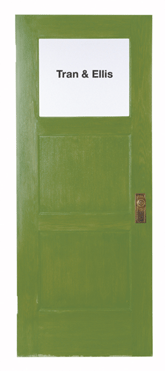
Camly Tran is checking her results— again. She’s hunched over the extra desk stuffed into her advisor’s small, picture-filled office. Blinding sun is streaming through the white poster board ineffectively blocking the light coming through the window in front of her computer. Tran is staring through the glare at the data that she’s already double-checked time and again. She’s even retested her chemical samples, sure she “did this wrong.” These results just aren’t possible.
Tran, a junior, is working for class credit at Carnegie Mellon’s Institute for Green Oxidation Chemistry. For a chemistry major, actual lab research is strongly encouraged, and Tran’s interest in green chemistry makes this assignment a natural fit. Both graduate and undergraduate students have the opportunity to work at the institute, with PhD candidates advising the undergraduates on a variety of projects. Tran and the others are researching the potential use of chemical activators that transform industrial pollutants into non-toxic, biodegradable alternatives. Real world possibilities include treating unwanted byproducts from both paper processing and textile dying mills.
“Chad, can you look at this?” Tran finally asks her advisor, Chad Ellis, a third-year PhD candidate sitting at his own desk just a few feet from Tran’s right shoulder. He turns to look at her charts. For a moment, the findings puzzle him. Then, he smiles. He’s a man of few words, but his eyes are clearly sparkling in a way she hasn’t seen before. Ellis asks her for a print-out to take immediately to one of the lab’s senior staff members. In no time, Tran and Ellis are in conference. Putting his small glasses on, the senior advisor peers at the data. “Interesting …,” he replies slowly, “I think we have something.” Tran has found that Ellis’ altered oxidation molecule is superior in many ways to the lab’s patented original. The findings could make the chemical activators more effective in breaking down pollutants.
Tran and Ellis return to their own “homey” office. Ellis clarifies a few of the more difficult chemical concepts brought up down the hall. He reminds Tran, as he has many times before, that scientific research can be a roller coaster. With that said, they each turn to their own computers. Back to work. The sun still shines in.
—Melissa Silmore (TPR’85)



